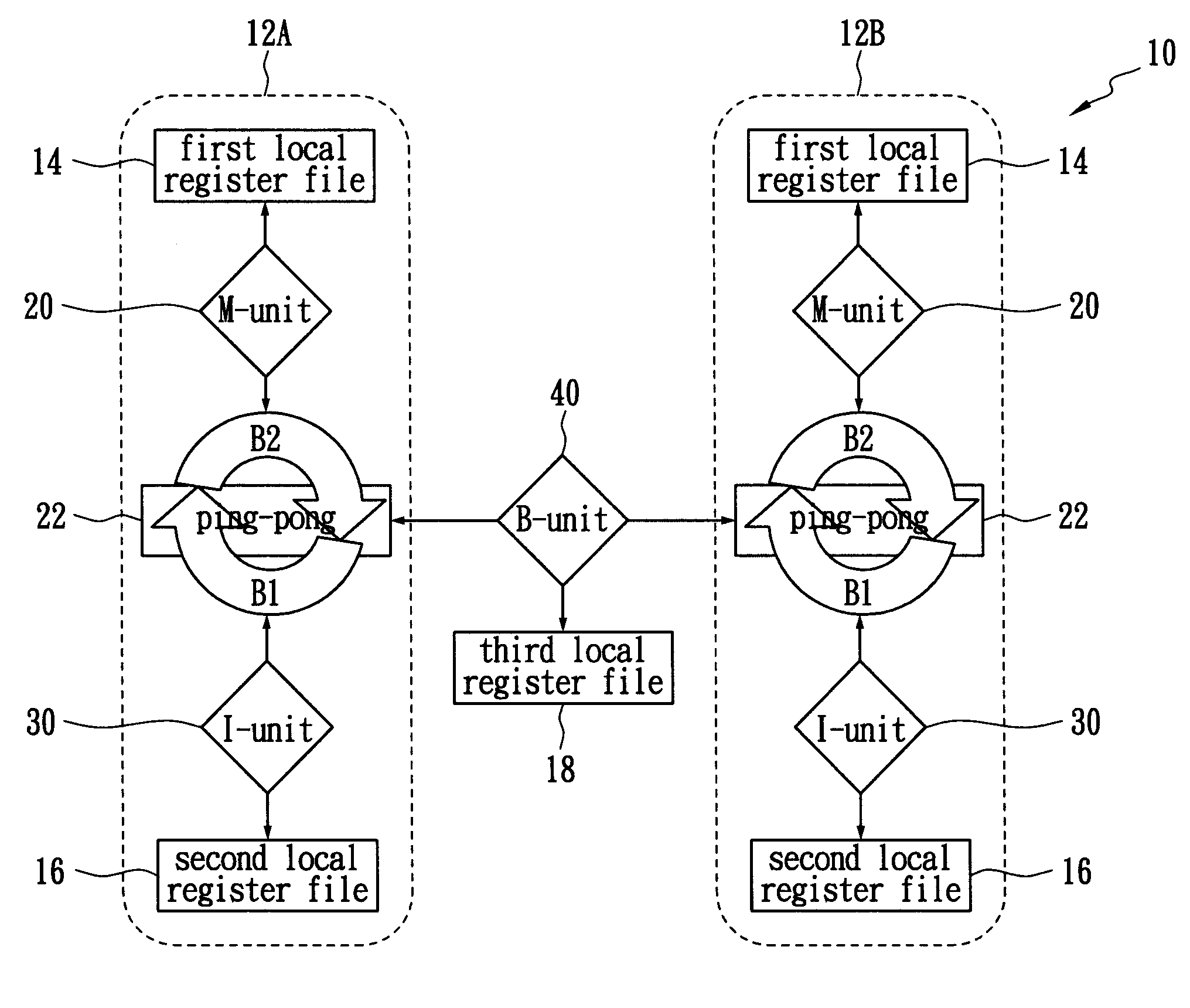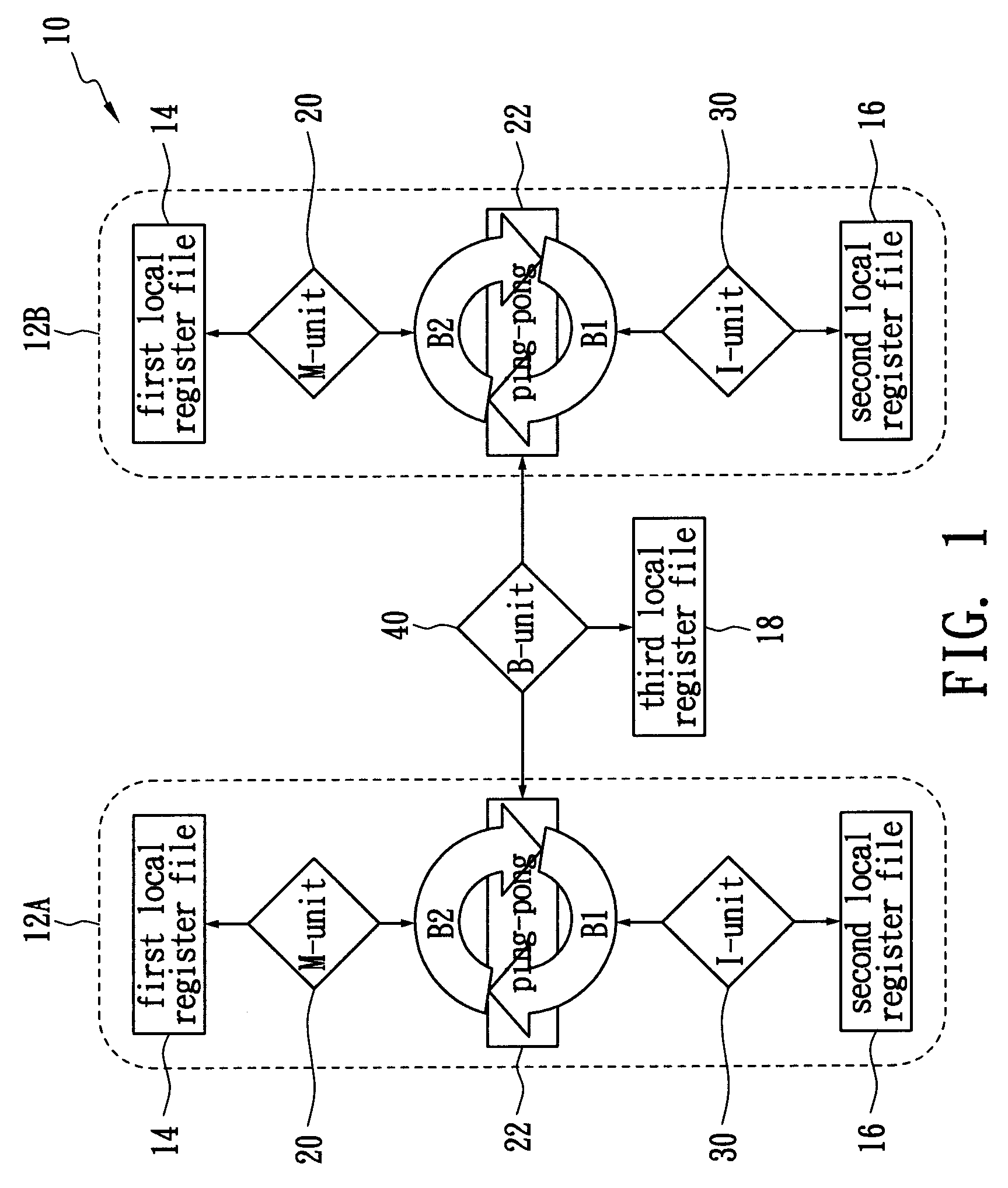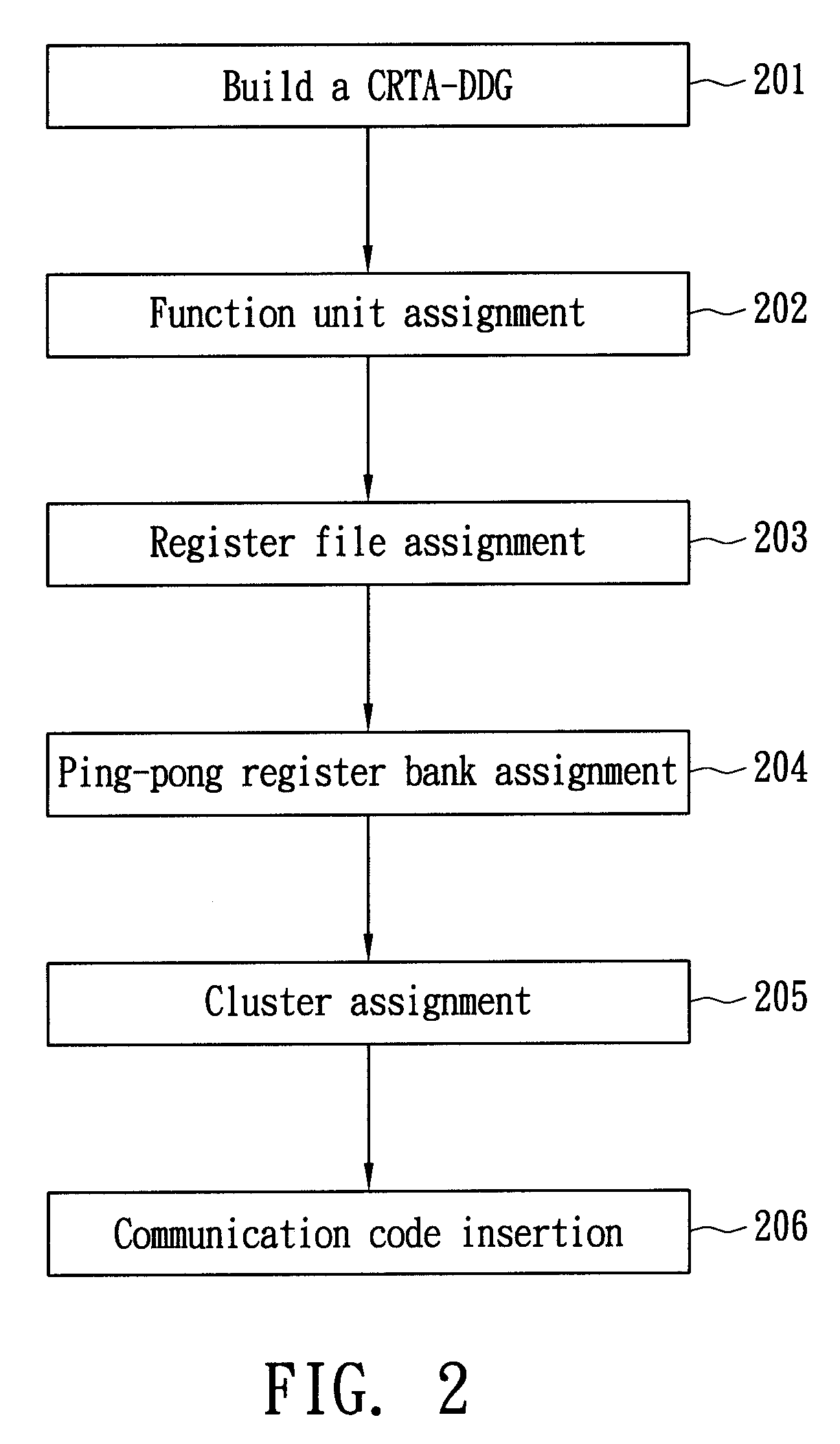Method for allocating registers for a processor
a technology for allocating registers and processors, applied in the field of method for allocating registers for processors, can solve the problems of inability to directly apply to the machine, inability to find a truly optimal solution, and inability to allocate registers. achieve good allocating performan
- Summary
- Abstract
- Description
- Claims
- Application Information
AI Technical Summary
Benefits of technology
Problems solved by technology
Method used
Image
Examples
Embodiment Construction
[0018]FIG. 1 illustrates the architecture of a Parallel Architecture Core (PAC) processor 10. The PAC processor 10 comprises a first cluster 12A and a second cluster 12B, wherein each cluster 12A or 12B comprises a first functional unit 20, a second functional unit 30, a first local register file 14 connected to the first functional unit 20, a second local register file 16 connected to the second functional unit 30, and a global register file 22 having a ping-pong structure formed by a first register bank B1 and a second register bank B2. Each register file includes a plurality of registers.
[0019]Also, the PAC processor 10 comprises a third functional unit 40, which is placed independently and outside the first cluster 12A and the second cluster 12B. A third local register file 18 is connected to the third functional unit 40.
[0020]The first functional unit 20 is a load / store unit (M-Unit), the second functional unit 30 is an arithmetic unit (I-Unit), and the third functional unit 40...
PUM
 Login to View More
Login to View More Abstract
Description
Claims
Application Information
 Login to View More
Login to View More - R&D
- Intellectual Property
- Life Sciences
- Materials
- Tech Scout
- Unparalleled Data Quality
- Higher Quality Content
- 60% Fewer Hallucinations
Browse by: Latest US Patents, China's latest patents, Technical Efficacy Thesaurus, Application Domain, Technology Topic, Popular Technical Reports.
© 2025 PatSnap. All rights reserved.Legal|Privacy policy|Modern Slavery Act Transparency Statement|Sitemap|About US| Contact US: help@patsnap.com



